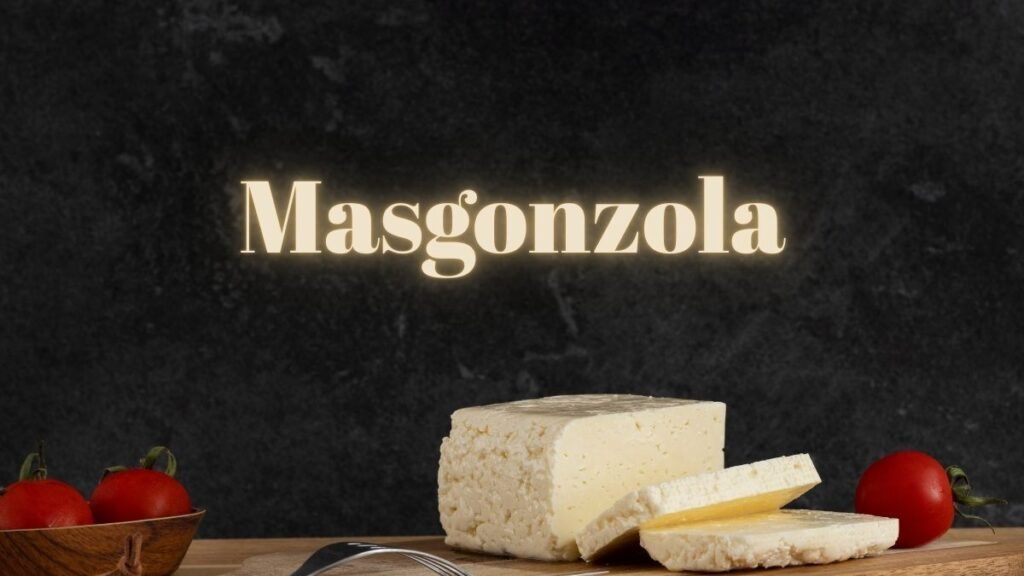Mascarpone is a luxurious Italian cheese that blends the creamy richness of mascarpone with the mild, tangy elegance of Gorgonzola Dolce. Originating from Northern Italy, this soft, marbled delicacy offers a perfect harmony, silky sweetness from mascarpone balanced by the subtle sharpness of blue-veined Gorgonzola. With its smooth, spreadable texture and refined flavor, the Italian cheese blend is ideal for pairing with honey, fig jam, nuts, or crusty bread, and can elevate pasta, risotto, and gourmet appetizers into truly memorable culinary experiences.
History of Masgonzola
Masgonzola was born in Northern Italy, a region celebrated for its dairy craftsmanship and diverse cheese traditions. This area’s lush pastures, nurtured by Alpine waters, produce milk of exceptional quality, perfect for rich, flavor-forward cheeses.
- Mascarpone: Originating in Lombardy, mascarpone is a fresh, double-cream cheese with a velvety smoothness and subtle sweetness.
- Gorgonzola Dolce: Also hailing from Lombardy and Piedmont, this is the milder sibling of the stronger Gorgonzola Piccante. It is aged for a shorter period, resulting in a soft, creamy blue cheese with delicate veining and a gentle tang.
By blending these two, artisans created something entirely new, a cheese that delivers the best of both worlds: indulgent creaminess with a graceful blue note that even those wary of strong cheeses can enjoy.
Artisanal Production Process
Creating Masgonzola is both a science and an art. While large-scale producers exist, the finest varieties are made by small, artisanal dairies that respect traditional methods while ensuring quality and safety.
- Milk Selection: High-quality cow’s milk, often from local herds, is chosen for its richness and balanced fat content.
- Culturing and Coagulation: The milk is gently heated, and cultures are introduced. For the Gorgonzola Dolce component, Penicillium roqueforti spores are added, which will later form the characteristic blue veining.
- Curd Formation: The curds are cut and carefully handled to retain moisture, ensuring a creamy end product.
- Blending: Mascarpone is folded into the partially matured Gorgonzola Dolce, creating the marbled texture and complex flavor profile.
Flavor and Texture Profile
- Flavor: Mascarpone is a masterclass in balance. The mascarpone imparts notes of fresh cream, butter, and a touch of sweetness, while the Gorgonzola Dolce adds a whisper of earthiness, mild tang, and the faintest nutty undertone. The blue veining is subtle, never overpowering, making the cheese approachable even for those new to blue varieties.
- Texture: It is luxuriously smooth and spreadable, with occasional pockets of soft, melty blue. The marbled appearance is as visually appealing as the taste is satisfying, making it a showpiece on any cheese platter.
Culinary Uses of Mascarpone
Masgonzola’s versatility is one of its most celebrated traits. Whether you’re hosting a casual gathering or preparing a high-end dinner, it can transform simple ingredients into gourmet creations.
1. Cheese Boards and Appetizers
- Pair with honey or fig jam for a sweet-savory combination.
- Serve with toasted walnuts, pecans, or almonds for textural contrast.
- Spread on crusty baguette slices or artisan crackers for an instant appetizer.
2. Pasta and Risotto
- Melt Mascarpone into a creamy sauce for tagliatelle or gnocchi.
- Stir into a mushroom risotto just before serving for richness and depth.
3. Gourmet Pizzas
- Use as a base topping with prosciutto, caramelized onions, and arugula.
- Combine with roasted pears and balsamic glaze for an elegant twist.
- Nutritional Profile
- While Masgonzola is undeniably an indulgence, it offers nutritional benefits when enjoyed in moderation.

Nutritional Profile
While Masgonzola is undeniably an indulgence, it offers nutritional benefits when enjoyed in moderation.
| Nutrient (per 30g serving) | Approximate Value |
| Calories | 110 to 130 kcal |
| Protein | 3 to 4 g |
| Fat | 10 to 11 g |
| Carbohydrates | <1 g |
| Calcium | 8 to 10% DV |
| Sodium | 150 to 200 mg |
Pairing Guide
Wine Pairings:
- Sweet wines like Sauternes, Moscato d’Asti, or Vin Santo complement the creamy texture and mild tang.
- For a savory approach, try light reds such as Pinot Noir or fruity Merlot.
Beer Pairings:
- Belgian Tripel or wheat beers balance the richness without overpowering it.
Non-Alcoholic Pairings:
- Sparkling apple cider or pear juice offers refreshing acidity.
- Herbal teas, especially chamomile or lavender, create a delicate balance.
Buying and Storing Mascarpone
When purchasing Masgonzola, look for:
- Fresh, creamy appearance with well-defined marbling.
- A mild aroma, it should smell creamy and slightly tangy, not overly pungent.
- Packaging that indicates authentic Italian origin or reputable artisanal production.
Storage Tips:
- Keep in the refrigerator, wrapped in wax paper and then loosely in plastic to allow slight airflow.
- Consume within a week of opening to enjoy peak flavor and texture.
- Allow to rest at room temperature for 30 minutes before serving to bring out its full aroma.
Cultural Significance
Italian cheese blend represents more than a flavor; it embodies the Italian philosophy of balance, beauty, and pleasure in food. Like many regional specialties, it’s a testament to how Italy’s cheesemakers respect their heritage while innovating. It’s also a bridge between culinary worlds: appealing to blue cheese lovers while inviting those who usually shy away from the stronger varieties to enjoy the depth of flavor without intimidation.
FAQs
Q1: Is Masgonzola the same as Gorgonzola?
No. While Gorgonzola is a traditional blue cheese, it is a blend of Gorgonzola Dolce and mascarpone, giving it a milder, creamier profile.
Q2: Can Masgonzola be frozen?
Freezing is not recommended, as it can alter the texture and make it grainy. Fresh consumption ensures the best flavor.
Q3: Is Masgonzola suitable for vegetarians?
It depends on the producer. Some use animal rennet, while others use microbial rennet. Check the label or ask the supplier.
Conclusion
Masgonzola is a culinary gem, a harmonious blend of creamy mascarpone and gently tangy Gorgonzola Dolce that captures the artistry of Italian cheesemaking. Whether spread on rustic bread, swirled into pasta, or paired with honey and wine, it brings a luxurious, memorable touch to any table. By respecting its origins, appreciating its craftsmanship, and experimenting with pairings, you can experience the Italian cheese blend not just as a cheese but as an expression of Italy’s passion for food.

James Whitaker brings a wealth of knowledge and creativity to content writing across various niches such as health, technology, personal finance, and digital marketing. Known for his ability to simplify complex topics and deliver audience-centric content, he helps brands build authority and trust.

